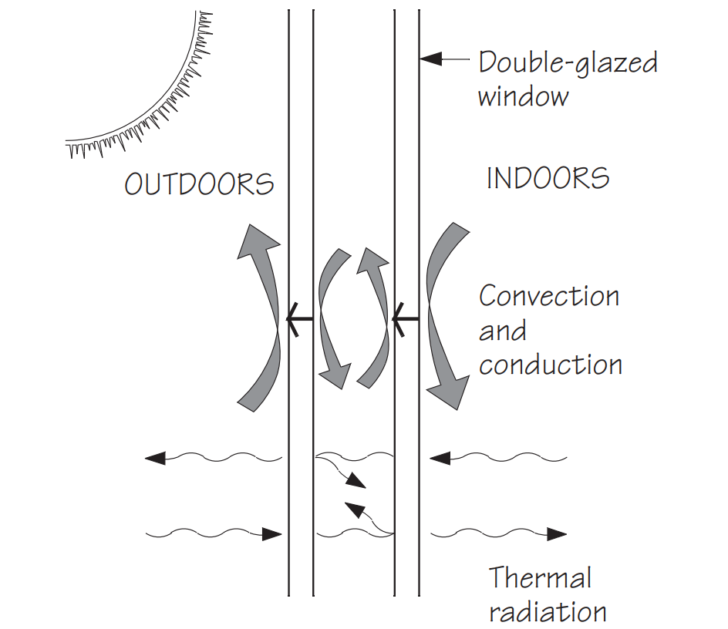Types of Heat Loss in a Building

There are four types of heat loss within any building. These include thermal radiation, conduction, convection, and air infiltration.
To understand these heat loss mechanisms or heat transfer, let’s start at the surface of a door inside a warm building with a cold outside temperature. The door itself is conducting heat out of the building because heat always flows from warm to cold. So the inside surface of the door is slightly cool because it is sending all of its heat outside. By contrast, the outside surface of the door is very warm relative to the air’s outside temperature. This is where radiation and convection come in.
Radiation under normal circumstances is driven by a surface’s emissivity, the area of a surface, and the temperature of that surface relative to the surrounding fluid. So with a big door and low outside temperatures, if the door is an excellent thermal conductor (meaning it is letting a lot of heat through it), then the radiation heat transfer will be sending all the heat away from the surface of the door quickly.
Convection will also be aiding in this transfer of thermal energy away from the door. If the air outside the door is moving quickly, in other words, if it is windy outside, then the heat will be whisked away from the surface of the door. By continually replacing the air at the door’s surface, the temperature difference between the door’s surface and the thin layer of air right next to it is never able to change, and the radiation heat transfer never slows down.
By contrast, if the air outside was not moving and convection was low, then the radiation heat transfer would slow down because the thin layer of air right next to the surface of the door would have a chance to warm slightly, thereby lowering the relative temperature difference between the surface of the door and the surrounding fluid.
Back on the inside surface of the door, similar principals are at work. Radiation and convection are functioning to send more heat to the surface of the door. Remember, the inside surface is cool because it is conducting heat from inside to the cold outside. The principle of thermal equilibrium demands that all objects and fluids in contact with one another come to the same temperature. This
Radiation can occur within the glazing of the windows, causing the heat to radiate outwards, escaping.
Conduction can move through all of the solid parts of the door. (Jambs, panels, sill, etc.). The heat that is lost from air movement near to and in the space between the glass or the door and frame is caused by convection.
With air infiltration, cracks within the joins or underneath the door can cause heat to move out of the building.
There is no way to stop heat loss through doors entirely, but there are ways to improve it significantly.
Part1: How to significantly reduce heat loss in a building.
Transcend Thermal Series
Learn about Transcend – the most energy-efficient custom commercial doors on the market – only by Dawson!